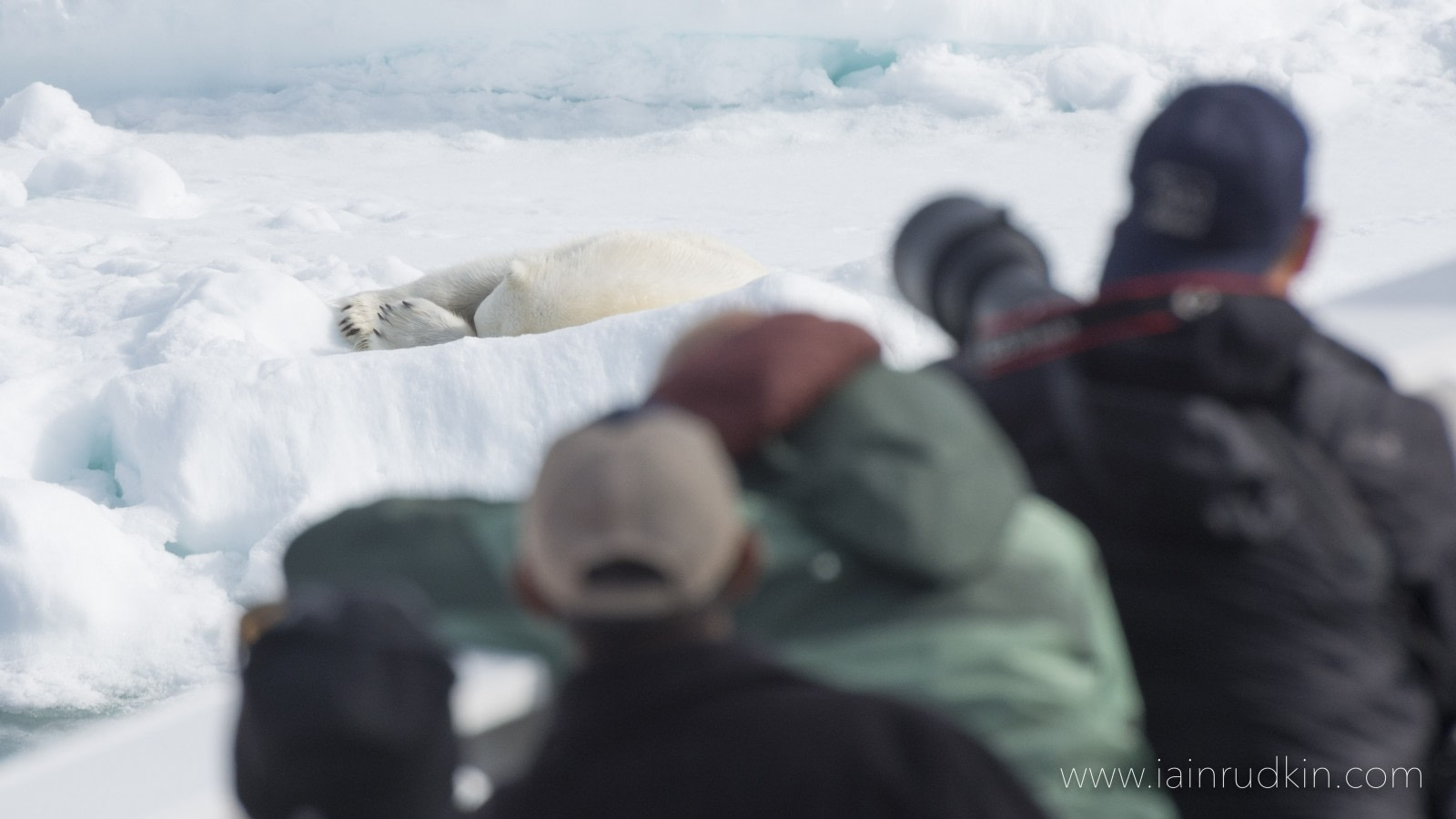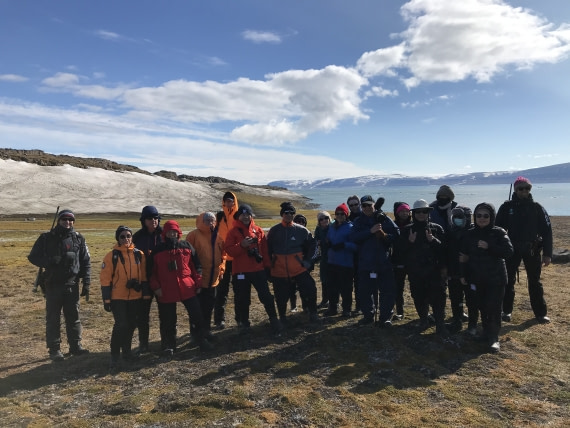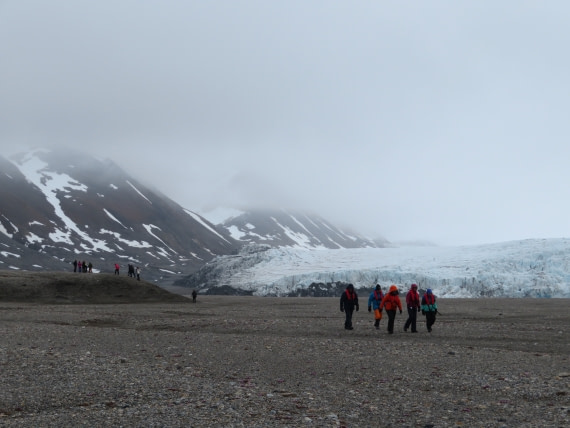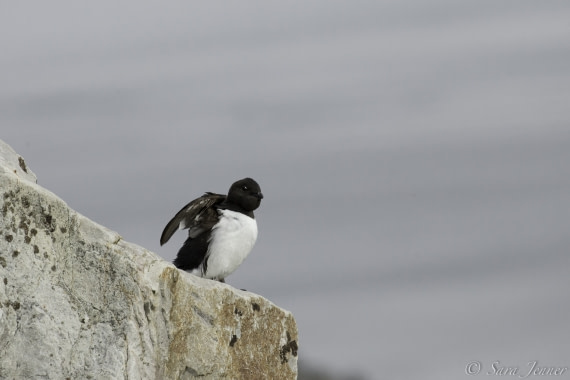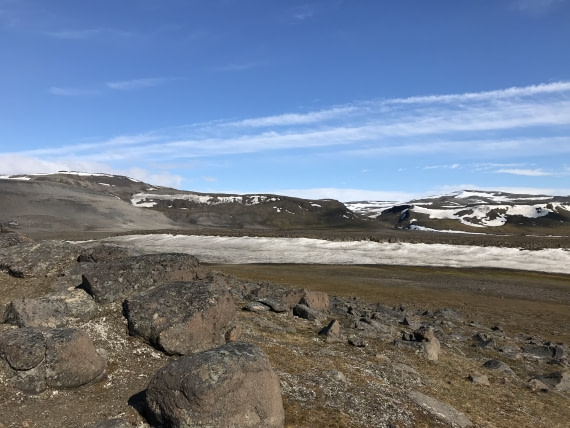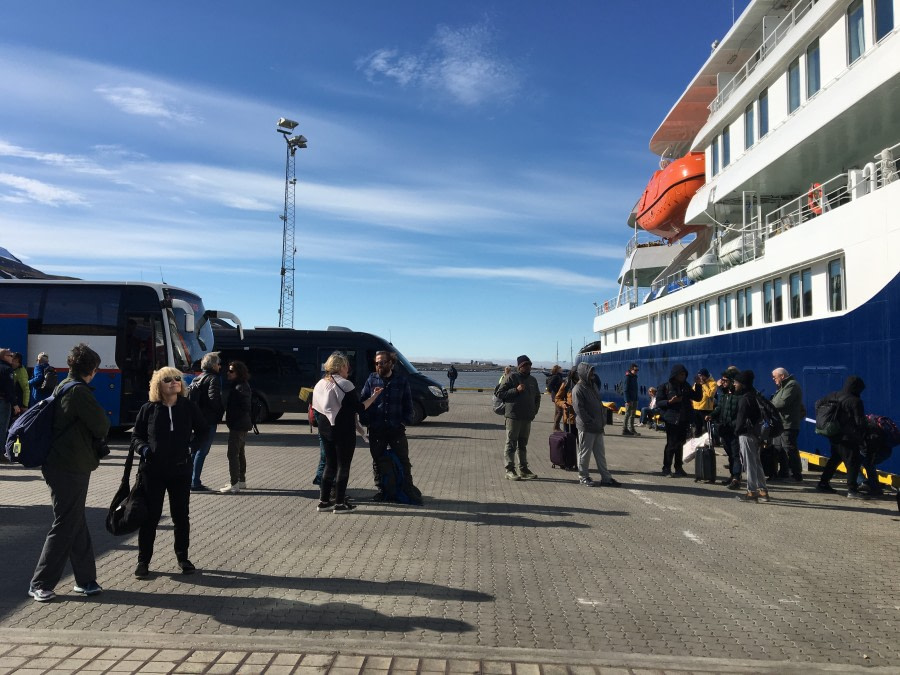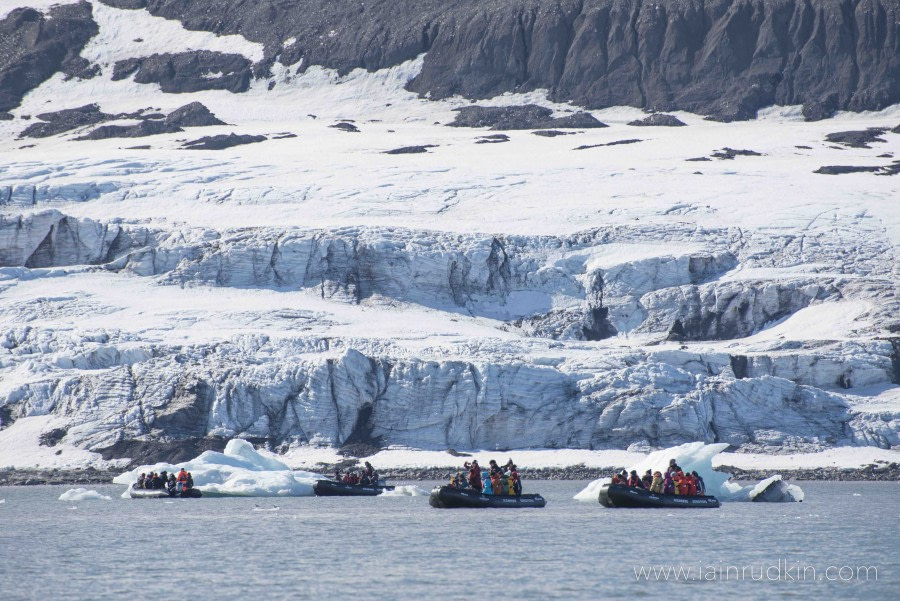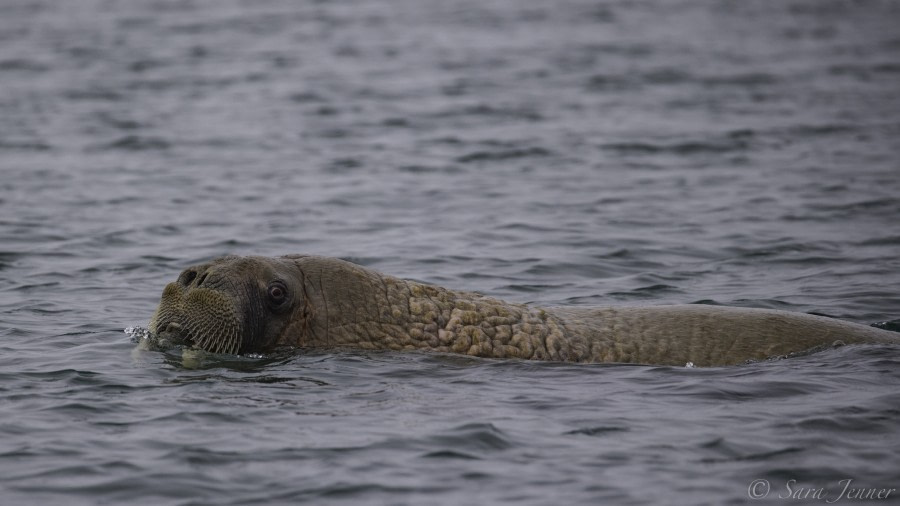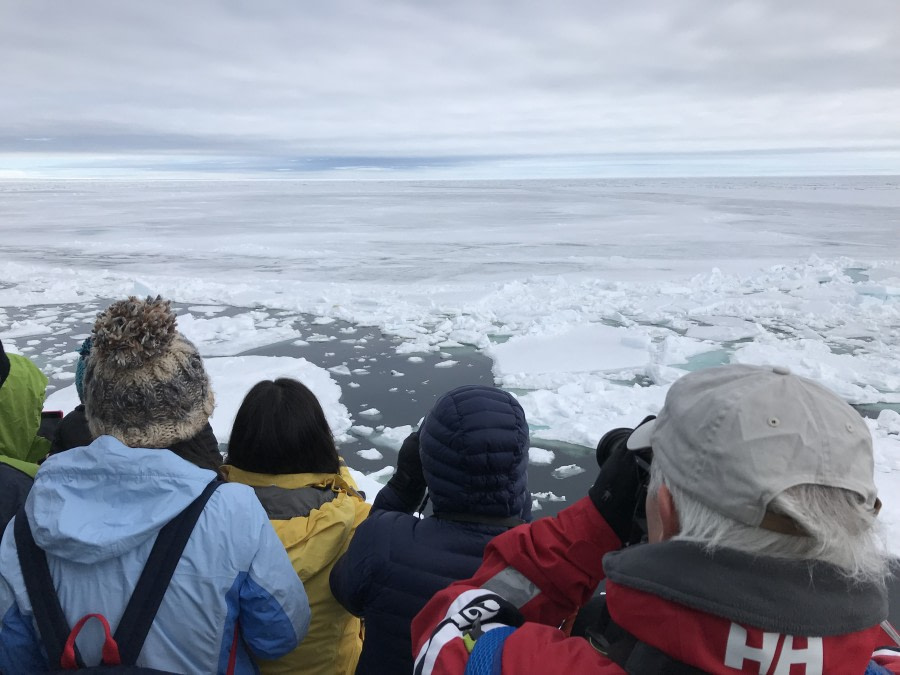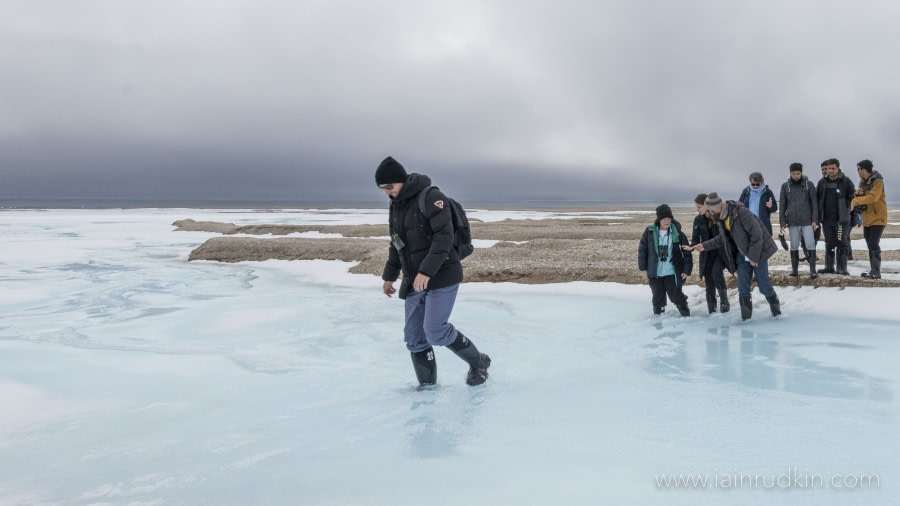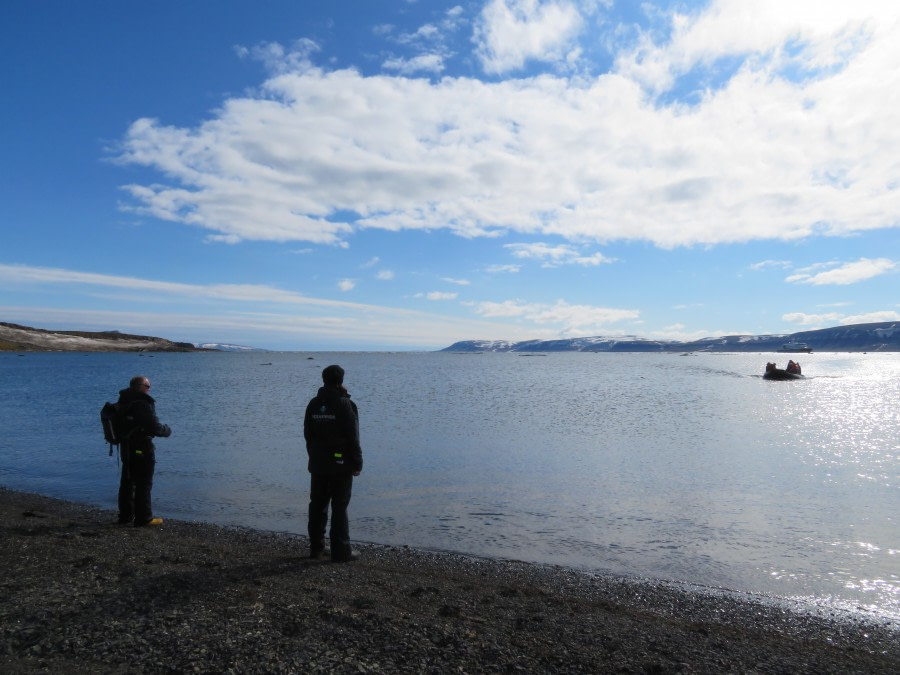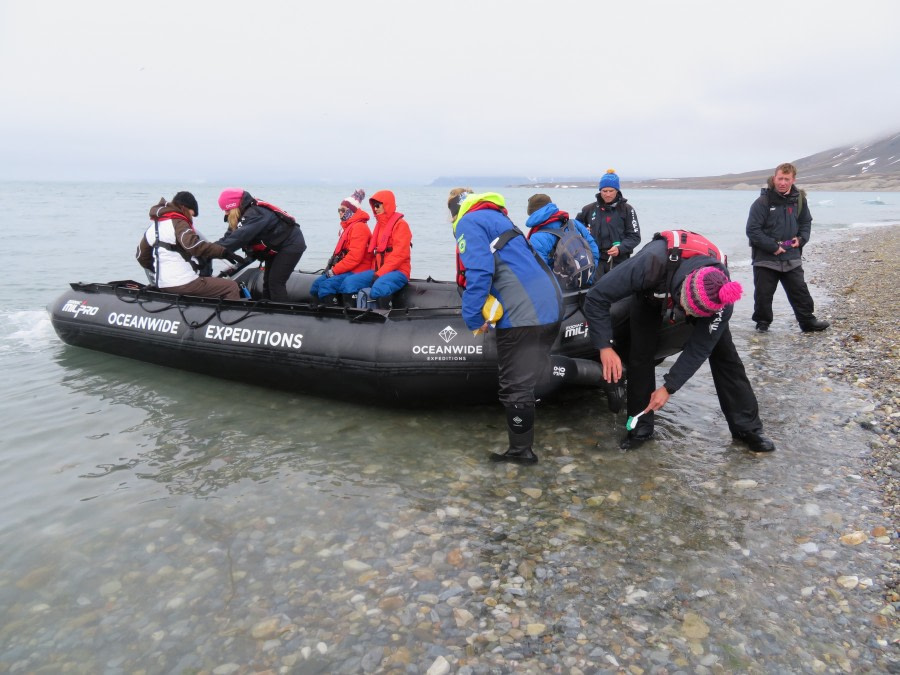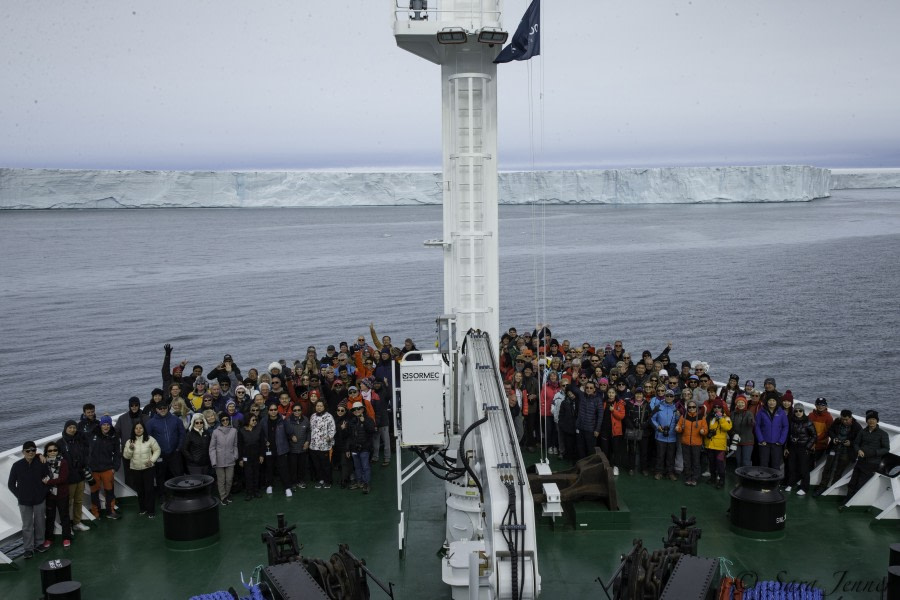| Fecha: | 21.06.2019 |
| Posición: | 78°09.6’N, 14°14.9’E |
| Viento: | NNE 2 |
| Clima: | Partly cloudy |
| Temperatura del Aire: | +7 |
Some of us had already arrived in Longyearbyen the previous day, while a few flew in just in time to embark on Hondius. After long journeys we were finally on Svalbard, in the realm of the polar bear. We had imagined that the Arctic was wild and unforgiving, and the flight in over the rugged icy desert underlined this. We had arrived into a world of glaciers, mountains, and wild Arctic coastlines. We have travelled from 16 different countries, including Germany, the Netherlands, South Africa, Brazil, Italy, Spain, Switzerland, France, Thailand, and China. After making our way to the harbour we were welcomed aboard Hondius and shown to our cabins by the friendly hotel team. We had a little time to grab a coffee in the lounge and to explore the ship, home for the next week of adventure. Our expedition leader Raphaël greeted us in the lounge and we were given a mandatory safety briefing by the First Officer before we went out on deck to wave goodbye to Longyearbyen. We sailed out of Adventfjord, past the airport and satellite station, before making our way south, exploring new destinations around beautiful Svalbard. We enjoyed our first sumptuous dinner in the restaurant, while the Arctic landscape outside was bathed in the sparkling sunlight of the midnight sun. As we headed out of Isfjord, and onto the open seas, the gentle movements of the ocean swayed us to sleep.
